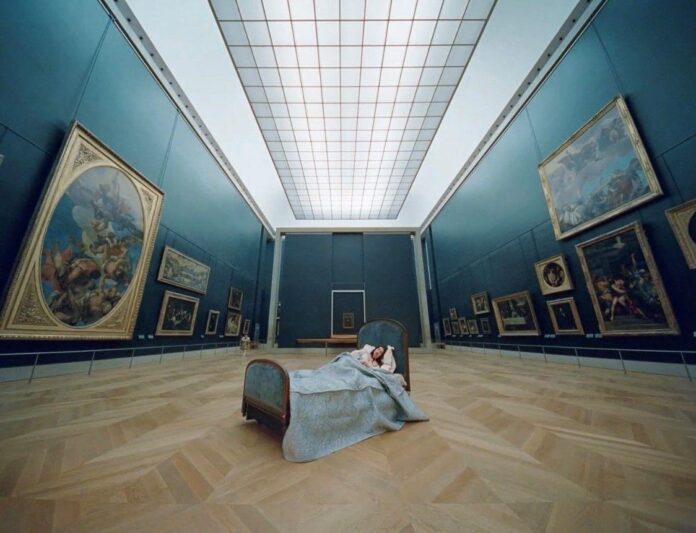Twenty contemporary artists have made videos, some using mobile phones, for a new contemporary art initiative inspired by the Musée du Louvre called Louvre Looks. The videos, lasting three minutes and thirty seconds, will be posted weekly on the Louvre’s digital platforms including its Instagram account, which has almost five million followers.
According to a Louvre statement, “the artists—working with film crews or with their own mobile phones, by night or during visiting hours, using digital resources or focusing on their personal connection to the works—have created a polyphonic portrait of the Louvre as life and audiences have returned to the museum”. The project marks the 230th anniversary of the museum in 2023.
“Every work is remarkable in its own way, stating the very specificity of a unique artistic engagement with the museum. What is even more striking is the diversity of the responses: they touch upon questions, works, sensitivities, but each with a very personal feeling. That is what we aimed for in choosing the artists, and they did the rest,” says Donatien Grau, head of the Louvre’s contemporary programme.
Contributors include Ivan Argote, Hicham Berrada, Anton Bialas and Kamilya Kuspanova, Mykki Blanco and Dachi-Giorgi Garuchava, and Bianca Bondi. “The programme stems from [Louvre director] Laurence des Cars’ vision to be at the same time faithful to and respectful of the Louvre’s history and heritage—including contemporary creative practitioners of our time—as well as to radically embrace today’s resources and questions,” Grau adds.
The Paris-based artist Christelle Oyiri, another participant, has created a work called I bow, but am not intimidated. She says in a statement: “As a child, I had an ambivalent relationship with the idea of a museum. My father was a security guard at the Cité des Sciences et de l’Industrie [science museum in Paris]… when I entered the Louvre for the first time, it was a shock. Artistically, of course, but above all in my way of experiencing the art around me. Now an adult and an artist, I feel more comfortable with the idea of touching and feeling these monumental works through my understanding.”

Christelle Oyiri, I bow, but am not intimidated (2022) Courtesy Musée du Louvre
Another contributor, the Los Angeles-born Ariana Papademetropoulos, discusses her film, Towards Marvellous Kingdoms (2022), saying: “Like the endless halls of the Louvre that lead to marvellous kingdoms, bed is a place to dream of other worlds, contemplate and linger on the threshold of dimensions. When I was invited to participate in this project, my first thought was this: ‘What would I like to do in the Louvre that I could never do otherwise?’ I thought of floating on a bed through many masterpieces that would come to life and join me on this journey, some physically, others spiritually.”
Grau says: “What the artists conceived is no mere ‘testimony’. They are works of art: whether a poem, an art video, a short film, a clip—to reference Kynaston McShine’s famous exhibition at the Museum of Modern Art in New York [Information, 1970], the museum came across as their ‘muse’. And indeed, the Louvre has been an inspiration for artists since it opened in 1793, and even before. There were studios at the Louvre. The museum’s first director, Dominique Vivant Denon, was a keen writer and draughtsman.”
The entire film project will be presented at a premiere screening in the museum’s Michel Laclotte Auditorium on 26 January; one video a week will be posted on the Louvre’s Instagram account thereafter. The initiative is the latest in a series of digital innovations such as Une Oeuvre du Louvre whereby a contemporary artist chooses a stand-out work from the museum collection, explaining the reasons behind their decision on Instagram. Participants include the German artist Candid Höfer and the Spanish sculptor Miquel Barceló who have hosted exhibitions at the Louvre.
“Everything we do is rooted in the museum and highlights the many ways it can be perceived. As Cézanne said: ‘The Louvre is the book in which we learn how to read’,” Grau says.

























